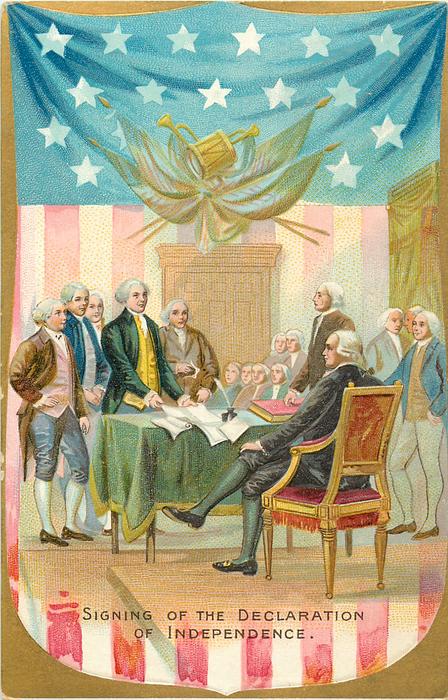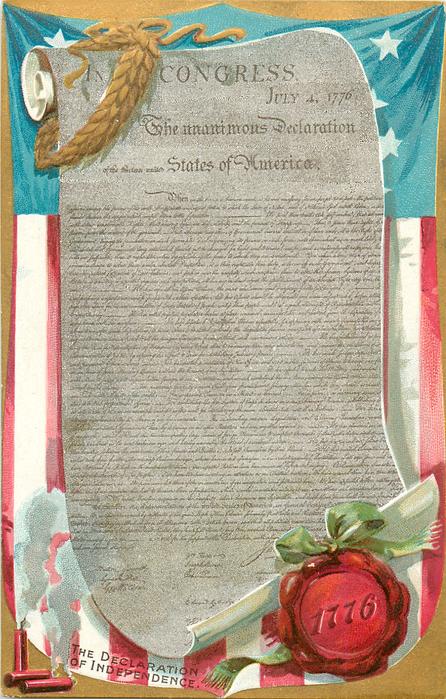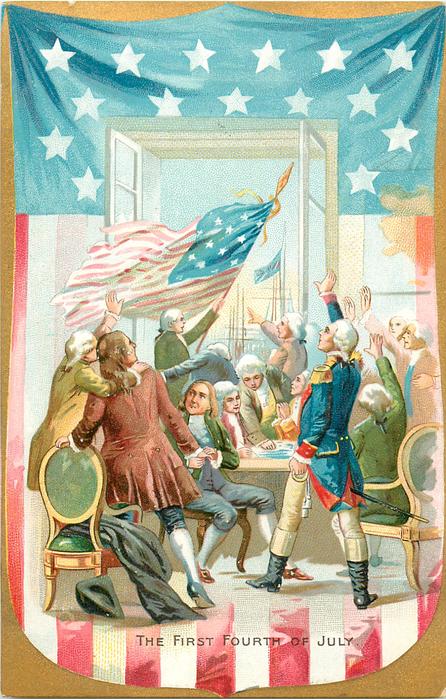George “Burt” Martin
The Declaration of Independence
No nation in the history of mankind has celebrated their “independence” day with more enthusiasm than Americans. From Afghanistan and Albania (alphabetically) to Zambia and Zimbabwe, and even Vatican City, more than two hundred nations celebrate the day freedom was earned, fought for, and achieved by treaty or granted.
The date July 4, 1776. Two hundred and forty-six years ago, TODAY.
* * *
In a study group I attended while working toward my naturalized citizenship, at one point the conversation came around to, “How would the Declaration of Independence be written today?”
The general consensus was that it wouldn’t. Gridlock in nearly every phase of life is so conflicting that individual differences would no longer be a positive influence. And in today’s world of social media, the ideas expressed in the Declaration would be truncated in two ways – context because so few people these days care about details and brevity because if it can’t be read in less than a minute, some would simply ignore the concept in favor of expediency.
At the time, since because men of my age take such things more seriously than most, I was somewhat dismayed when it was suggested that the total word count of the Declaration, if it were revised in modern terms, would be two. Yes, two words. I quote, “We quit.”
Have you read it? Perhaps you did in school many years ago, but what does it mean to the average American? Here are some facts.
- The Declaration of Independence has about 1,330 words.
- At the average reading speed of 300 words per minute it takes about four-and-a-half minutes to read the entire document. Another few minutes to decipher the signatures.
- The language used in the text comes from the mid-eighteen century. The practice of short sentence text was not fully developed at the time. Many words are antiquated and no longer in general use, making it hard to understand.
- In some cases the spellings differ. So do the standards of punctuation and capitalization.
- The content refers to actions and events as old or older than the document itself and without a thorough understanding of those events the grievances enumerated are empty ideas.
Nevertheless, as an American who earned my citizenship instead of getting it as a birthright, the Declaration of Independence is very personal to me. Here are some of my reasons:
- I come from a country that once practiced and to a degree still practices a class-society. That no longer matters to me for here in America, “all men are created equal.”
- I was born in a country where it was my duty while serving in the military to “fight and live or die” for my king and country. This does not matter either, for here in America, service to one’s country is for all who have indisputable rights to life, liberty, and the pursuit of happiness.
- I left my country, not because I had to, but because I wanted to. Here in America, as difficult as it is at times, diversity is still cherished and so am I.
But without hesitation, I can state without reservation that it does not matter how hard it is to read, after 246 years, it still works for everyone. Thank you, America.
* * *
I haven’t been collecting Fourth of July postcards for very long, but long before I thought about coming to the States to live, I collected a set of Tuck postcards – Set No. 109. It is a 12-card set, all vertical, each with a flag draped shield showing a star covered blue field at the top and very painterly images of both adults and children in a variety of poses where adults are at work and the children at play. The adults are in debate; the children at play waving swords, flags, or firecrackers.
Here are my four favorites. The titles follow.
- 1776 “This Is a Day of Memory – ‘Tis Freedom’s Jubilee!”
- “Hats Off, All Along the Line, When Freedoms Flag Goes By!”
- Independence Hall And Liberty Bell.
- Oh, Where Treads the Foot, That Would Falter For Thee!
- Ragged Continentals.
- Signing of the Declaration of Independence.
- “Still Whatever Fate Betide Us Children of The Flag Are We!”
- “Teach Him to Hold the Flag Holy and High for the Sake of Its Sacred Dead on the 4th of July.”
- The Declaration of Independence, 1776.
- The First Fourth of July.
- The “Spirit Of ’76.”
- “With Freedom’s Soil Beneath Our Feet, And Freedom’s Banner Streaming O’er Us.”




Interesting read
If the Declaration were being adopted today, the reference to “the merciless Indian Savages” would obviously not make it to the final draft.
I read this article when it was first written ,but am circling back to it now to enjoy again and to say thankyou for a job well done.